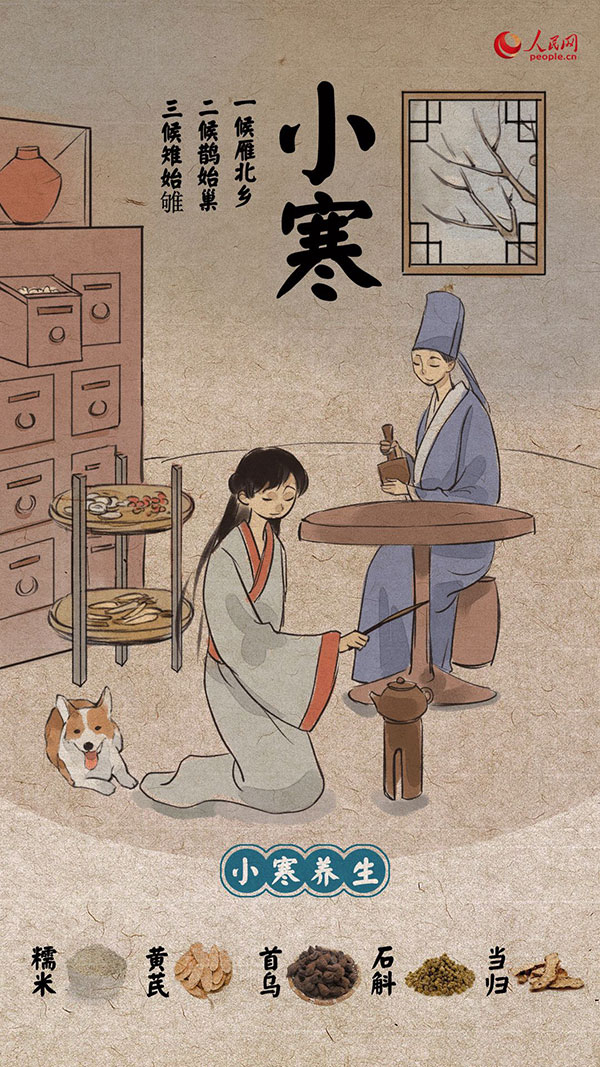


According to the traditional Chinese lunar calendar, China ushers in its 23rd solar term Minor Cold (Chinese: 小寒) today, Jan. 5. This solar term will last until January 19th.
This solar term welcomes China's coldest days, known as the Sanjiu period, or the 19th-27th days after Winter Solstice.
The three further breakdowns of Minor Cold are based on natural manifestations that you may see during this period, "Geese Heading North" (Chinese: 雁北乡), "Magpies Beginning to Build Nests" (Chinese: 鹊始巢), and "Ring-Necked Pheasants Beginning to Crow" (Chinese: 雉始鸲).
Different regions of China have their own particular ways to welcome Minor Cold. The Canto-nese usually eat glutinous rice mixed with peanuts, fried preserved pork and sausage in the morning. In Nanjing, vegetable rice is more popular, accompanied by aijiaohuang (a kind of Chinese cabbage), sausage and salted duck. In Tianjin, it's customary to eat huangyacai, a dif-ferent variety of Chinese cabbage, rich in vitamins A and B.
Similar to Winter Solstice, it's vital to stay warm and healthy, paying special attention to the kidneys, spleen and stomach. Besides doing more winter exercise to keep the immune system strong and body healthy, doctors suggest eating foods that are easy to digest at regular inter-vals. Mutton hot pot, fried chestnuts, and roasted sweet potatoes are all popular options.
During this solar term, Chinese people begin preparing for the Spring Festival by writing Spring Festival couplets, making paper decorations for window decoration, and buying lanterns and firecrackers.